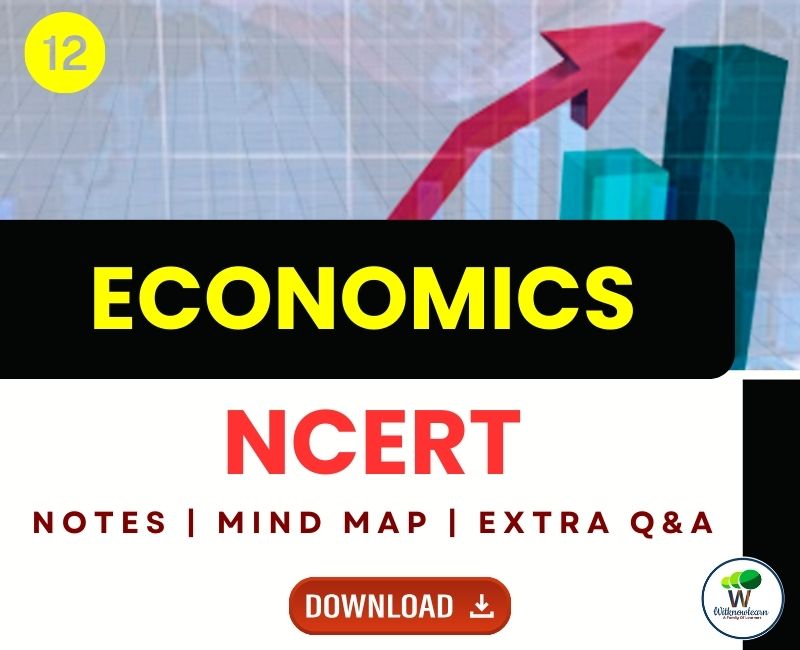Environment and Sustainable Development - Notes & Mind Map Economics Class 12
In the context of today's world, the importance of environment and sustainable development cannot be overstated, particularly for students in class 12, who stand on the threshold of becoming future leaders and decision-makers. The study of environment and sustainable development class 12 encompasses a holistic understanding of how environmental conservation and sustainable practices can be harmoniously integrated into our development goals. This subject is not just an academic inquiry but a crucial imperative for ensuring the health and longevity of our planet.
The environment and sustainable development notes class 12 serve as a vital resource, offering detailed insights into ecological conservation, sustainable use of resources, and the impact of human activities on the environment. These notes, available as environment and sustainable development class 12 notes PDF, provide a comprehensive overview of concepts like renewable energy, waste management, and sustainable agriculture. They are designed to help students grasp the intricate balance between economic growth and environmental protection.
For a more interactive and visual learning experience, the environment and sustainable development class 12 mind map effectively summarizes key concepts and their interconnections. This tool is particularly beneficial for visual learners and for quick revisions before exams.
Additionally, tackling environment and sustainable development class 12 MCQs and extra questions prepares students for their exams by testing their knowledge and understanding of the subject in a practical context. These resources are crucial for students to excel in their examinations and develop a deeper understanding of environmental issues.
For class 11 students, the environment and sustainable development project class 11 introduces them to the fundamental concepts and encourages them to think critically about environmental issues and their solutions. This project-based learning approach fosters a deeper connection with the subject matter.
In summary, whether through detailed notes, mind maps, or MCQs, the study of environment and sustainable development in class 12 is integral to educating young minds about the importance of sustainable practices. It prepares them not just academically but also instills a sense of responsibility towards the environment, ensuring a more sustainable and environmentally conscious future.
Environment — Definition and Functions:
The environment refers to the natural world, encompassing all living and non-living things that occur naturally on Earth. It includes everything from the air we breathe, the water that covers most of the earth's surface, the plants and animals around us, to the complex ecosystems. The functions of the environment are numerous and vital for the sustenance of life. It provides essential resources such as air, water, and food.
The environment also offers ecological services like purification of air and water, pollination of plants, and regulation of climate. It maintains the ecological balance and supports biodiversity. Furthermore, the environment plays a crucial role in shaping cultures and influencing human lifestyles. Understanding the environment and its functions is fundamental to appreciating its significance and the need for its conservation and protection.
Sustainable Development:
Sustainable development is a developmental approach that meets the needs of the present without compromising the ability of future generations to meet their own needs. It's a way to achieve progress and development while maintaining the balance of the ecosystem. Sustainable development focuses on three core elements: economic growth, environmental protection, and social equity.
This concept encourages the responsible use of resources to ensure environmental integrity and the wellbeing of all communities. It calls for innovative and efficient practices in industries, agriculture, and daily life. Sustainable development aims at creating a world where economic progress is achieved with minimal environmental impact and where everyone has fair access to resources and opportunities.
Strategies for Sustainable Development:
Strategies for sustainable development involve a series of actions and policies aimed at achieving long-term environmental health and economic prosperity. These include promoting the use of renewable energy sources to reduce reliance on fossil fuels and decrease greenhouse gas emissions. Sustainable agriculture practices are encouraged to ensure food security and maintain ecological balance.
Water conservation, waste management, and recycling are pivotal strategies to reduce environmental degradation. Sustainable urban planning and infrastructure development aim to create livable cities that minimize resource consumption and pollution. Education and awareness campaigns play a crucial role in changing attitudes and behaviors towards the environment. Additionally, international cooperation and policy frameworks are necessary to address global environmental issues like climate change and biodiversity loss. These strategies require a holistic and integrated approach, involving governments, businesses, communities, and individuals.





